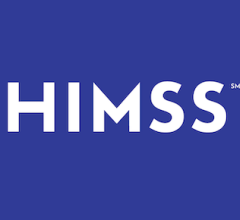
Healthcare is constantly evolving, finding new ways to innovate and advance digital tools and technology. With this comes the need for transformation to keep up with these advancements. DAIC spoke with Anne Snowdon, RN, PhD, FAAN, to find out more about the steps needed for this transformation and what we can expect to see in the future of healthcare. The full video interviews with her can be found here and here.
DAIC: How do you see innovation happening now in healthcare?
SNOWDON: This is a very interesting time in healthcare. My view is innovation is all about doing things that are very valued and important to the group you’re serving, with patients being front and center health. Systems have been through an unprecedented challenge in the last three years. They have had to change and innovate, and figure out ways to meet demands none of us could have ever imagined. For example, when we couldn’t see our private providers in person during the pandemic, we figured out telehealth. We figured out digital tools that help people help themselves stay well, and we need much more of that. We’ve made major changes and progress. I’m seeing a lot of innovation in workforce. We have a tremendous shortage of health workers, experienced clinicians in particular, worldwide, and there’s no country in the world not challenged by that. Health systems are rapidly designing new approaches to not just improve quality of work environments to retain their workforce, but also new models. They call it the gig model in nursing, where nurses work as contractors. Hospitals have now figured out ways to provide those same flexible hours and shifts, and can retain you as an employee instead of that temporary contracting arrangement, which we know from decades of research just doesn’t achieve the same quality and safety. There’s a lot going on in innovation in health systems and it’s iterating rapidly, even in things like artificial intelligence (AI). In business schools we often say never waste a crisis. I think health systems are starting to learn, and are demonstrating, that they are not wasting this crisis. Instead, they are driving innovation to meet the demands of their patient populations and support the health workforce to deliver the care they so desperately need.
DAIC: You’ve noted technology has outdistanced a health system’s ability to adopt it and use it to create value, leading to the need for transformation. Can you identify specific steps needed for this?
SNOWDON: One of the best examples of technology far outpacing our health systems’ ability to adopt it is to think about supply chain. In health systems, we didn’t really talk about supply chain before this pandemic. Well, those days are gone. Those global supply chains are very challenged, and yet in healthcare, it has not adopted those technologies to the degree every other business sector has. For example, you go online to Amazon and you’re looking for a particular type of book you’d like to read. Amazon knows the last five times I’ve been on the site, and tells me the books I tend to prefer or purchase. In healthcare, we have not been able to do that. But that technology exists, and it’s quite possible. You can adopt those technologies ... you can actually know which patients are likely to need emergency care this weekend or month with the change in weather. Given the challenges we’re seeing in public health, all those technologies exist ... but being able to proactively predict, plan and implement care that you know you’re likely going to have to deliver is only possible if it’s informed by very robust analytics technologies, which exist in every other business sector, but haven’t yet taken hold in health systems.
DAIC: What does the future of healthcare look like?
SNOWDON: The future of healthcare is largely going to be heavily influenced by the populations we serve. Populations now want to be confident in their health systems. They’re not exceptionally thrilled when they don’t see and have those great experiences or see those quality and safety outcomes. They’re going to influence that future health system leadership to get it right and make sure every person everywhere has the opportunity to achieve their health goals and their health potential. So that’s all about equity. Health systems can help them get there, but it’s not likely to happen without that digital transformation. We need to have very meaningful models of care that are digitally enabled, whether in person with digital tools or completely online. The future health system is all about how do we ensure every person doesn’t just have access to care, it’s about achieving the best possible outcomes for them.
Find more HIMSS23 coverage here
VIDEO: Moving Digital Transformation Forward in Healthcare
VIDEO: Key Components to Creating and Implementing AI and Digital Transformation Solutions
VIDEO: The Benefits and Pitfalls of Artificial Intelligence in Healthcare
VIDEO: A Look at Cybersecurity and How Healthcare is at Risk
Related Digital Transformation Content:
Robocath Launches New Robotic Platform R-One+
VIDEO: Using Maturity Models to Measure Digital Health
VIDEO: Moving Digital Transformation Forward in Healthcare
VIDEO: Key Components to Creating and Implementing AI and Digital Transformation Solutions
VIDEO: The Benefits and Pitfalls of Artificial Intelligence in Healthcare
VIDEO: A Look at Cybersecurity and How Healthcare is at Risk
New ACC President Defines Priorities for Year Ahead
Health That Connects + Tech That Cares at HIMSS 2023
ACC22: Transforming Cardiovascular Care


 November 15, 2024
November 15, 2024 








